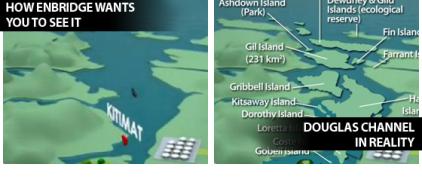
What role does science play in the approval and management of large-scale energy projects? Harper says it should play a significant role in environmental assessment process for the Enbridge’s Northern Gateway Pipeline project. Documents emerging from the National Energy Board show that Fisheries and Oceans Canada (FOC), the department responsible for ensuring the mitigation of risks posed to the water bodies along the pipeline route, were unable to deliver on requests for a comprehensive list and review of all 1000 streams and rivers affected by the pipeline.
FOC’s capacity to provide the relevant and necessary information for the environmental assessment has been significantly handicapped. Federal cuts in BC, including the closure of FOC offices in Smithers and Prince George (areas closest for monitoring the pipeline area) raise questions about the scientific capacity in government to effectively assess, evaluate and even regulate the risks posed by the Northern Gateway project. This lack of capacity is particularly concerning given that FOC has already cited areas where Enbridge-paid scientists have rated risks to certain terrain as low but upon examination Fisheries has changed the risks to medium to high, illustrating the need for this type of scientific oversight both in assessment and monitoring.
Recently, a notable piece of public information about the risks of the project to the marine environment has emerged from civil society organizations. A public campaign accusing Enbridge of misleading the public about the risks posed by shipping in the Douglas Channel has re-rendered an Enbridge visual of the shipping route. Whereas Enbridge uses an image of Douglas Channel as a simple, low risk shipping route from Kitimat to Hecate Strait, the re-rendered image adds the complexity of the geography and ecology of the Channel. The enhanced image changes the message from one of low risk to one of high risk, highlighting significant omissions by Enbridge and depicting the multiple navigational and ecological hazards in the marine environment. This public campaign raises additional questions about the role of government in not only performing robust scientific information prior to the approval of such large-scale and high-risk energy projects but also in delivering this information to encourage public debate on projects that will have a legacy effect for all British Columbians and Canadians.